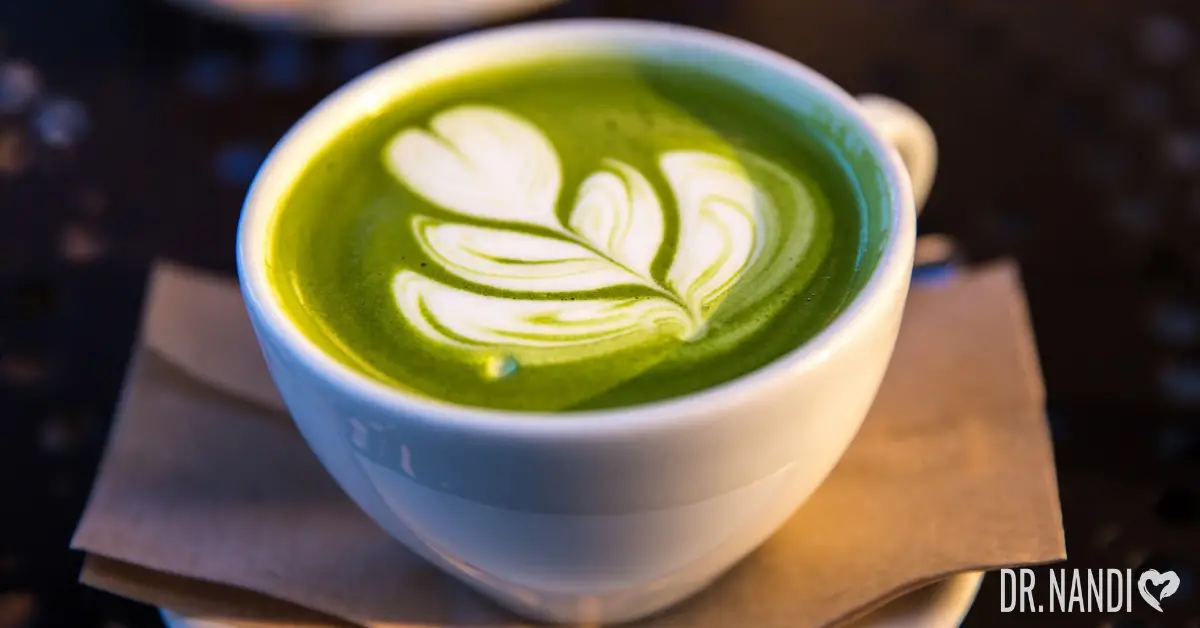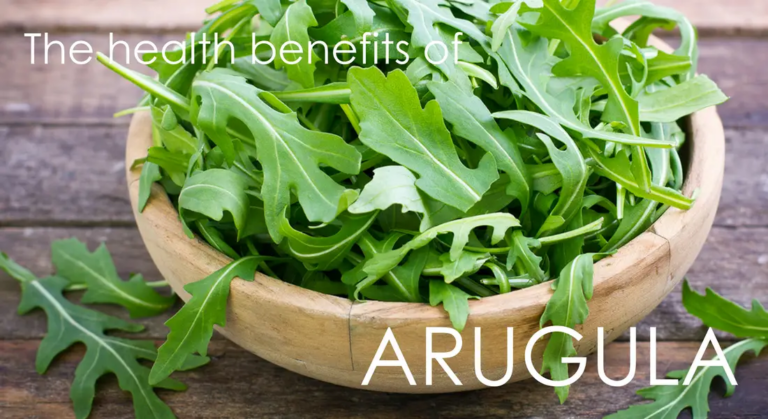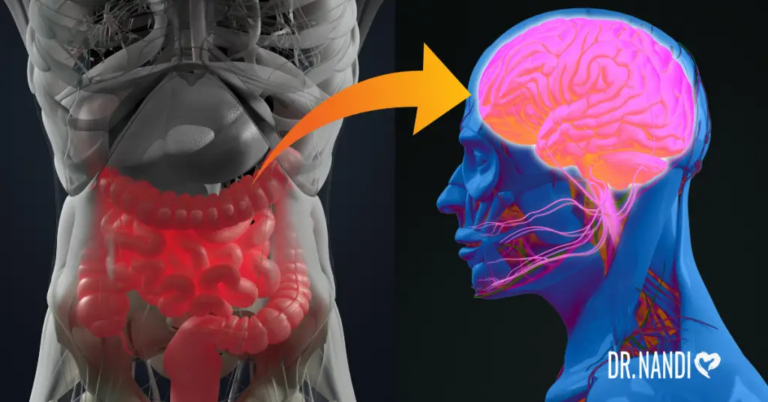Matcha is easily one of the healthiest teas you could ever drink. It contains antioxidants, amino acids, chlorophyll, and more. Matcha helps detox, acts as a mood booster, and can increase your mental focus. And those are just a few of its benefits!
To learn more about the health benefits of matcha tea, where it’s grown, and how to make your own, keep reading.
What is Matcha?
Matcha is a kind of green tea. Regular green tea takes components from the tea leaf and steeps them in hot water. The entire leaf is used; it’s ground up into a fine powder. Matcha is mixed with hot water, and then a special kind of whisk is mixed into foam.
Health Benefits of Matcha
One of the reasons matcha continues to grow in popularity is its numerous health benefits.
Supports Heart Health
Antioxidants in green tea leaves called catechins are known to support the cardiovascular system. Since matcha is a potent form of green tea, its catechins are more concentrated, too.
One study, published in The American Journal of Clinical Nutrition, found that catechins from tea may reduce the risk of mortality from heart disease.
A separate study published in Stroke found that drinking three cups of green or black tea every day could prevent stroke.
Matcha green tea may even improve healthy cholesterol levels. An analysis of numerous studies found that consuming green tea resulted in a significant reduction of LDL cholesterol.
Green Tea May Prevent Cell Damage Caused by Free Radicals
Green tea is loaded with antioxidants, which help fight free radical damage. Some damage that free radicals may cause include:
- Dementia
- Clogged arteries
- Inflammatory diseases
- Cataracts
- Age-related declines in appearance, like sagging skin, wrinkles, and hair loss
Green Tea Supports Healthy Metabolism
Researchers have found that drinking matcha tea can help boost the rate at which your body burns calories, called thermogenesis. The study showed the rate of thermogenesis without matcha was 8-10%, and with matcha, it jumped to 35-43%. It supports a healthy metabolism.
Green Tea is Good for Your Gut
Some of the antioxidants in matcha are called polyphenols. These antioxidants can act as food for the good bacteria living in your gut. With healthier good bacteria comes improved gut health. So, drinking matcha can help improve gut issues like bloating, gas, and upset stomach.
Green Tea Supports Cognitive Function
Studies show that drinking matcha can help improve brain health. A study done in 2017 showed that adults who drank matcha showed better reaction time, memory, and attention than the adults who didn’t drink matcha.
In 2014, another study found that three months of daily consumption of green tea powder may slow the rate of cognitive loss.
Green Tea May Improve Mood
Matcha contains L-theanine, an amino acid known to help you feel calm and relaxed. Matcha has 20mg of this amino acid compared to other green teas, with only 4 mg. It really helps in improving mood like Mood Support Supplement.
Green Tea and Eye Health
Green tea comes from the leaves of a plant called Camellia sinensis and stays unfermented – so it keeps the integrity of its inherent antioxidants. Green tea is packed with powerful eye-healthy nutrients like a flavonoid called gallocatechin – which collects in the retina and helps protect it from harmful blue light. Zeaxanthin and lutein, two other important antioxidants for the eye, can also be found in small amounts in green tea. Green tea extract has also been shown to help improve occasional dry eye by supporting the tissues on the ocular surface and inhibiting a protein called MMP-9 which has been proven to be a major contributor of occasional dry eye.

Green Tea Improves Mental Focus
Matcha contains caffeine, which is why some people have replaced their daily cups of coffee with it. On top of that, the L-theanine pairs well with that caffeine, creating a calm sense of alertness and focus. Matcha is a good alternative for those who are prone to coffee jitters.
Green Tea Helps With Detoxification
Chlorophyll is potent in matcha; it’s what gives this tea its vibrant green color. Chlorophyll is a powerful detoxifier and effectively rids your body of chemicals and heavy metals. Chlorophyll exists in other green veggies, but matcha is vibrant with it.
Caffeine in Matcha Green Tea
Another reason why so many people love matcha is because of its caffeine content! Matcha tea contains about 34mg of caffeine in a recommended serving. That number is a little higher than green tea, 30mg of caffeine, and lower than coffee, 60mg.
Something cool about the caffeine content in matcha green tea is that it can last longer than other caffeinated drinks. The amino acid L-theanine, that’s in matcha, paired with caffeine, can give you the alert, mental clarity, and focus without the jumpy jitters so often associated with caffeine.
Different Kinds of Matcha
There are different kinds, or grades, of matcha green tea. There’s little to no difference in nutritional value, but there is a difference in taste and quality! There are two broad categories for matcha: ceremonial and culinary.
Ceremonial Grade Matcha
For more than eight centuries, a tea ceremony has been a sacred ritual in Japan. Tea masters used matcha tea in the ceremony and used only the highest quality matcha. That’s where ceremonial grade matcha gets its name. You probably figured out what’s unique about this grade; it’s the highest quality matcha you can find.
Ceremonial-grade tea is made with first flush leaves, meaning they are the youngest, most tender leaves plucked during harvest season. These leaves are said to yield the purest, freshest tea. When ground, these leaves are a bright green color, and when whisked, they result in a creamy, frothy drink.
Culinary Grade Matcha
Each additional flush after the first can be considered culinary-grade matcha. There are no clearly defined guidelines or rules to determine what constitutes culinary grade matcha, but there are a few distinctions. Culinary-grade matcha tends to have a lighter green color and an increasingly bitter taste. Depending on which of the 5 categories it’s in Prime grade, Cafe grade, Ingredient grade, Classic grade, and Kitchen grade.
Culinary-grade matcha is typically less expensive than ceremonial grade, easier to come by, and is popularly used in mixed beverages, like lattes or baked goods.
The Difference Between Matcha Green Tea and Other Teas
Matcha is one type of brewed green tea. The major difference between matcha and other teas is that matcha is made using the entire tea leaf. In contrast, other teas are made with only leaf parts. Matcha is made by grinding the leaf into a fine powder and whisking it with water to create a froth. Other teas are steeped in water.
Origins of Matcha
Farmers have been cultivating matcha for close to 1,000 years. It comes from the same green and black tea plant: the Camellia Sinensis bush. Matcha originates in Japan, and the highest grade of matcha still comes only from a few select regions: Uji, Yame, and Kirishima.
How to Make Matcha Tea?
There’s a particular way to make matcha. While these steps aren’t complicated, they should be followed precisely for the best matcha.
There are two different types of matcha you can make. The standard version is usucha. The other kind is koicha, which is thicker and richer.
Materials include a whisk, sifter, and small bowl or large mug. A bamboo whisk is ideal because it’s uniquely designed to froth the tea. A sifter helps remove any clumps from the power. The bowl is for sifting the matcha and water. You’ll be drinking out of the same bowl or mug that you mix your matcha in.
Once you have those materials, you’re ready to start making matcha.
- Sift 1-2 teaspoons of matcha powder into a bowl. Two teaspoons result in richer, thicker matcha, called koicha.
- Pour 50-70 ml of almost-boiling water into the bowl. For rich koicha, use only 50 ml. For the weaker usucha, use 70 ml of water.
- With the whisk, slowly start at the bottom of the bowl, picking up the powder. After that, quickly whisk the top half of the liquid in a W-shaped squiggle, making sure not to touch the bottom of the bowl at all.
For the best taste and texture, drink your matcha within 3 minutes of making it. Otherwise, it will lose its frothy texture, and the powder will start to gather at the bottom of the vessel.
Final Thoughts on Matcha
Some health trends are fleeting, but matcha green tea is the real deal. Matcha delivers health benefits to its dedicated advocates with powerful amino acids, antioxidants, and chlorophyll.
If you’re sensitive to caffeine, matcha might not be for you. But for others, matcha is worth a try. One of my favorite matcha is Pique’s Sun Goddess Matcha. It is the world’s purest organic ceremonial grade matcha to Quadruple Toxin Screen for heavy metals, pesticides, toxic mold, and radioactive isotopes. This matcha comes from Kagoshima, the farthest point from industrial pollution and radiation in Japan. This matcha tea also maximizes its health benefits. The tea leaves are shaded 35% longer to produce more amino acids, including calming L-theanine. Not to mention, it has an incredible creamy umami flavor that is sure to delight. You can check them out here!

Dr. Partha Nandi Recommended Green Tea Recipe
Green Tea & Berry Smoothie

Click here to get the instructions for the Green Tea & Berry Smoothie Recipe.

References:
- Catechin intake might explain the inverse relation between tea consumption and ischemic heart disease: the Zutphen Elderly Study – PubMed (nih.gov)
- Green and black tea consumption and risk of stroke: a meta-analysis – PubMed (nih.gov)
- Green tea intake lowers fasting serum total and LDL cholesterol in adults: a meta-analysis of 14 randomized controlled trials – PubMed (nih.gov)
- https://www.ncbi.nlm.nih.gov/pmc/articles/PMC6462167/
- Ingestion of a tea rich in catechins leads to a reduction in body fat and malondialdehyde-modified LDL in men – PubMed (nih.gov)
- An intervention study on the effect of matcha tea, in drink and snack bar formats, on mood and cognitive performance – PubMed (nih.gov)
- Nutrients | Free Full-Text | Green Tea Consumption Affects Cognitive Dysfunction in the Elderly: A Pilot Study (mdpi.com)
- What Is Matcha? And Is It Healthy? (nbcnews.com)
- Effect of Green Tea Phytochemicals on Mood and Cognition – PubMed (nih.gov)












 Subscribe to Ask Dr. Nandi YouTube Channel
Subscribe to Ask Dr. Nandi YouTube Channel










